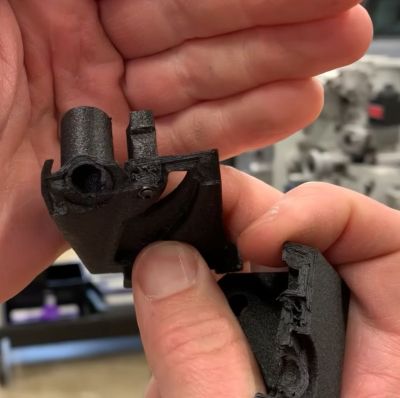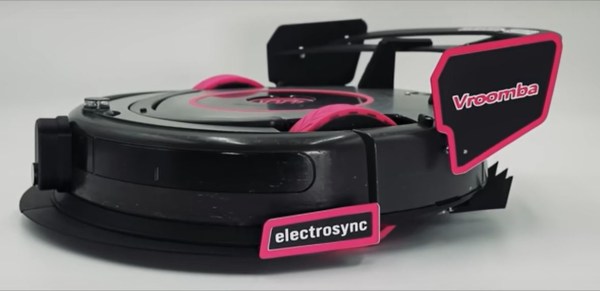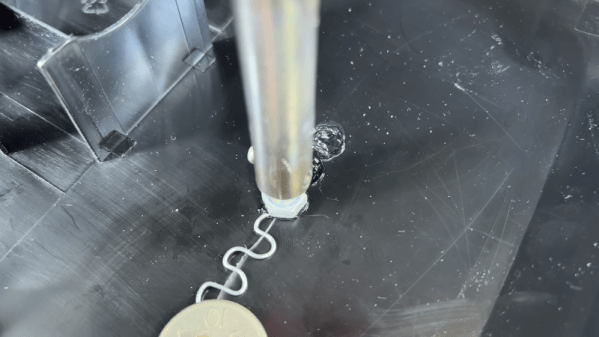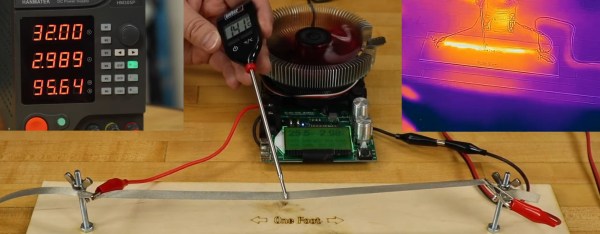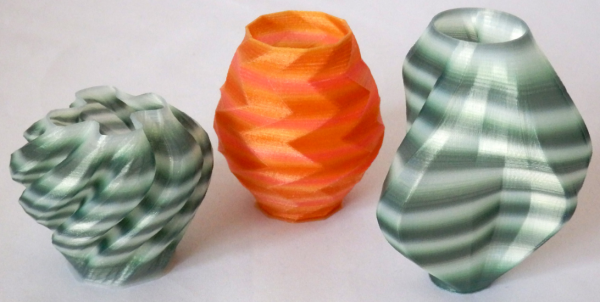Making nylon plastic from raw chemicals used to be a very common demo; depending where and when you grew up, you may well have done it in high school or even earlier. What’s not common is taking that nylon and doing something with it, like, say extruding it into filament to make a benchy. [Startup Chuck] shows us there might be a reason for that. (Video, embedded below.)
It starts out well enough: sebacoyl chloride and hexamethaline diamine mix up and do their polymerizing tango to make some nylon, just like we remember. (Some of us also got to play with mercury bare-handed; safety standards have changed and you’ll want to be very careful if you try this reaction at home). The string of nylon [Chuck] pulls from the beaker even looks a little bit like filament for a second, at least until it breaks and gets tossed into a blobby mess. We wonder if it would be possible to pull nylon directly into 1.75 mm filament with the proper technique, but quality control would be a big issue. Even if you could get a consistent diameter, there’d likely be too much solvent trapped inside to safely print.
Of course, melting the nylon with a blowtorch and trying to manually push the liquid through a die to create filament has its own quality control problems. That’s actually where this ends: no filament, and definitely no benchy. [Chuck] leaves the challenge open to anyone else who wants to take the crown. Perhaps one of you can show him how it’s done. We suspect it would be easiest to dry the homemade nylon and shred it into granules and only then extrude them, like was done with polypropylene in this mask-recycling project. Making filament from granules or pellets is something we’ve seen more than once over the years.
If you really want to make plastic from scratch, ordering monomers from Sigma-Aldrich might not cut it for ultimate bragging rights; other people are starting with pulling CO2 from the atmosphere.
Thanks to [Chaz] for the tip! Remember that the tips line isn’t just for your successes– anything interesting can find its home here.
Continue reading “Fail Of The Week: Beaker To Benchy More Bothersome Than Believed”



